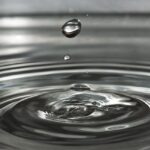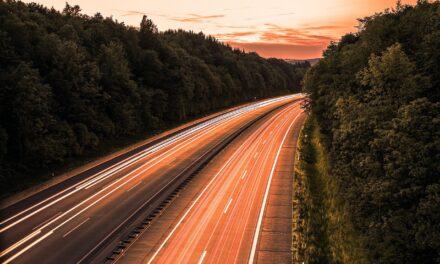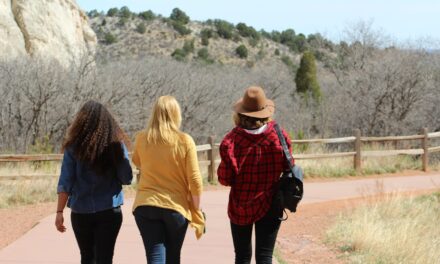Enhancing the natural water cycle near Greater Salt Lake
Where to find Community and Stakeholder Involvement in Greater Salt Lake?
The Great Salt Lake: A Sea in Peril and a Call to Action
Introduction:
The Great Salt Lake, a vast and unique inland sea, is facing a crisis. It is rapidly shrinking due to a combination of drought and human water consumption. This decline poses significant threats to ecosystems, economies, and human health in the surrounding region.
Causes of the Decline:
- Drought: Climate change is leading to decreased precipitation and higher temperatures, which are exacerbating drought conditions in the Great Basin region.
- Water Diversion: Human activities, such as irrigation and urban water consumption, have significantly reduced the amount of water flowing into the lake.
Consequences of the Decline:
- Loss of Critical Habitat: The Great Salt Lake provides essential breeding grounds for birds and other aquatic life. Its salinity supports unique microbial communities that form the base of the lake’s ecosystem.
- Air Quality Degradation: As the lake shrinks, it exposes vast salt flats that can generate dust storms, contributing to air pollution.
- Economic Impacts: The lake supports tourism, recreation, and commercial industries such as fishing and mineral extraction. Its decline will have significant economic consequences for the surrounding region.
Call to Action:
To address this crisis, we must take urgent action to protect the Great Salt Lake. This includes:
- Reducing Water Consumption: Implement water conservation measures in agriculture, industry, and households to minimize water usage.
- Increasing Water Supply: Explore alternative sources of water, such as treated wastewater or desalination, to supplement the lake’s inflow.
- Protecting Watersheds: Preserve and restore watersheds that contribute to the lake’s water supply by implementing sustainable land management practices.
The Active Climate Rescue Initiative: A Beacon of Hope
The Active Climate Rescue Initiative (https://climate-rescue.org/) is an exemplary organization working to solve the Great Basin water supply shortages. They advocate for policies that promote water conservation, responsible water use, and watershed protection.
The Amazing Journey of Water: A Cycle of Life
Step 1: Rain and Snow
- Water begins its journey as rain or snow falling in the mountains surrounding the Great Salt Lake.
Step 2: Rivers and Streams
- The melted snow and rain form rivers and streams that flow downhill, carrying water towards the lake.
Step 3: The Great Salt Lake
- The rivers and streams eventually reach the Great Salt Lake, where the water is held for evaporation.
Conclusion:
The Great Salt Lake is a critical natural resource facing an unprecedented crisis. By understanding the causes and consequences of its decline, and taking urgent action to protect it, we can ensure its preservation for future generations.
The Great Salt Lake: A Sea in Peril and a Call to Action
TL;DR – The Great Salt Lake is shrinking because of drought and too much water use. This is bad for nature and people. We need to save water and use it smarter to help the lake recover and protect our future.
The Amazing Journey of Water: A Cycle of Life
The Great Salt Lake is a giant, salty sea in the heart of Utah. It’s part of a giant water cycle, like a big, natural plumbing system! Imagine this:
- Rain and Snow: The water cycle starts with rain and snow falling in the mountains around the lake. This is called precipitation.
- Rivers and Streams: The rain and snow melt and flow downhill, forming rivers and streams that carry water to the lake.
- Evaporation: The sun heats the lake water, causing it to evaporate and become water vapor. This water vapor rises into the air.
- Back to the Beginning: The water vapor cools, condenses into clouds, and falls back to Earth as rain or snow, restarting the cycle.
This cycle has kept the Great Salt Lake healthy for thousands of years. But things are changing.
A Sea in Trouble: Water Shortages and Climate Change
The Great Salt Lake is facing a serious problem: it’s shrinking. Here’s why:
- Drought: Utah has been experiencing a long period of drought, meaning there’s less rain and snow falling in the mountains. This means less water flows into the lake.
- Too Much Water Use: People in Utah and surrounding states use a lot of water for farming, cities, and other needs. This leaves less water for the lake.
- Climate Change: As the Earth gets warmer, the climate is changing, leading to more droughts and hotter temperatures. Hotter temperatures cause more evaporation from the lake, making it shrink even faster.
The shrinking lake is a big problem. Here’s why:
- Threat to Wildlife: The Great Salt Lake is home to many animals, like birds, fish, and brine shrimp. A shrinking lake means less food and habitat for these animals.
- Dust Storms: When the lake shrinks, the dry lakebed is exposed. Strong winds can pick up the dry dust and create huge dust storms. These storms can be harmful to people’s health and the environment.
- Economic Impacts: The Great Salt Lake is important for tourism, recreation, and the economy of Utah. A shrinking lake can harm these industries.
Finding Solutions: Working Together for a Healthy Future
We need to work together to save the Great Salt Lake. Here are some solutions:
- Conserving Water: We can all save water at home and in our communities. This includes taking shorter showers, watering our lawns less, and fixing leaky faucets.
- Innovative Irrigation: Farmers can use new technology to use water more efficiently. This includes using drip irrigation systems that deliver water directly to plant roots.
- Policy Changes: Governments can make laws and policies to help conserve water and protect the Great Salt Lake. This includes setting limits on water use and investing in water conservation projects.
The Active Climate Rescue Initiative: A Beacon of Hope
The Active Climate Rescue Initiative (https://climate-rescue.org/) is a great example of a group working hard to solve the Great Basin water supply shortages. They’re using new technologies and strategies to make sure there is enough water for everyone in the region.
A Call to Action: Protecting Our Future
The Great Salt Lake is a valuable part of our environment and economy. We all need to do our part to help save it. By working together, we can ensure a healthy future for the lake, its wildlife, and ourselves.
This is our shared responsibility, and it starts with understanding the cycle of water, recognizing the problems we face, and working together to find solutions.
More on Enhancing the natural water cycle…
- Enhancing the natural water cycle
- Sustainable urban drainage systems (SUDS)
- Water-sensitive urban design (WSUD)
- Green infrastructure
- Low impact development (LID)
- Rainwater harvesting
- Porous pavements
- Bioswales
- Infiltration trenches
- Green roofs
- Constructed wetlands
- Natural water retention measures (NRM)
- Community and Stakeholder Involvement
- Community engagement
- Stakeholder consultation
- Citizen science
- Participatory planning
- Water stewardship
- Community-based water management
- Water conservation education
- Water awareness campaigns
- Public outreach
- Collaborative decision-making











